Latest news about Bitcoin and all cryptocurrencies. Your daily crypto news habit.

Many crypto hedge funds were launched in the past 2 years because of a significant interest growth in cryptocurrencies. While some of these funds include experienced teams coming from other hedge funds, many of them were actually setup to make a quick profit during the hype.
In this article we will show why most so called crypto hedge funds are not actually hedge funds, but just passive investors in a basket of cryptocurrencies, in a way similar to mutual funds. Despite this, many of them still charge the typical 2/20 management and performance fees typical in the hedge fund world. The first section will introduce crypto hedge funds, while the second one will analyze their aggregate performance by looking at the Eurekahedge Cryptocurrency Hedge Fund Index. The last section concludes with key takeaways.
Crypto hedge funds stats
A crypto hedge fund is a pooled investment vehicle from multiple investors with the purpose of delivering uncorrelated returns with the crypto market by investing in cryptocurrencies. Cryptocurrency hedge funds are actively managed products, with the purpose of generating superior risk-adjusted returns uncorrelated with the direction of the crypto market (alpha). This is in contrast to crypto index funds, which are passively managed product with the aim of delivering just an exposure to the crypto asset class (beta).
Figure 1 shows the number of crypto fund launches, together with the price of Bitcoin. As it can be seen from the figure, there is a high correlation (ρ = 0.70) between the 2 measures. This should be expected, since a higher price of Bitcoin indicates creates greater interest in the crypto space and possibly higher capacity for crypto funds, with consequently greater economic incentives to launch one.
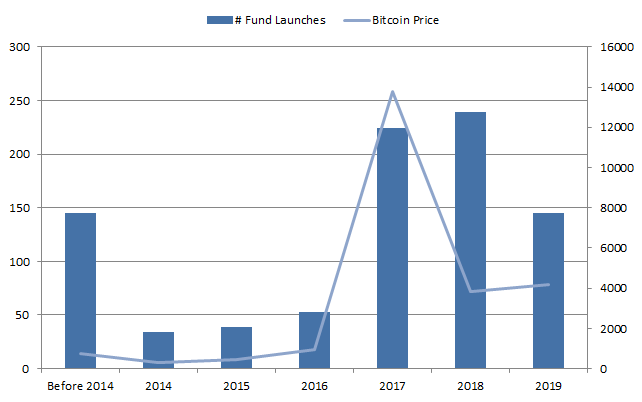 Figure 1 Number of crypto hedge fund launches vs Bitcoin price
Figure 1 Number of crypto hedge fund launches vs Bitcoin price
Figure 2 shows the assets under management (AUM) for crypto hedge funds over time, compared to the price of Bitcoin. It is interesting to note that, despite the bear market of 2018, crypto hedge funds still managed to attract capital. This may be due to a general interest in the crypto space, where investors may want to invest for the long term.
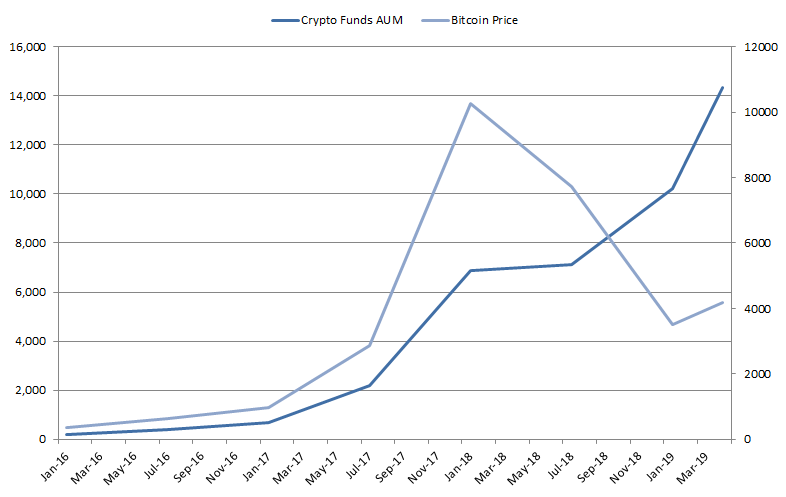 Figure 2 Crypto hedge funds AUM vs Bitcoin price
Figure 2 Crypto hedge funds AUM vs Bitcoin price
Figure 3 shows the distribution of AUM for crypto hedge funds. As it demonstrates, crypto funds are much smaller to traditional hedge funds, with most of them having less than $10 million in AUM, and only 5% surpassing the $100 million mark.
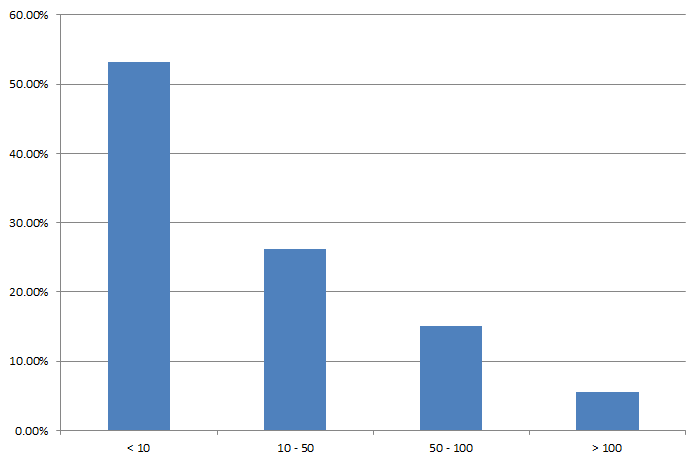 Figure 3 Distribution crypto hedge funds by AUM
Figure 3 Distribution crypto hedge funds by AUM
Figure 4 shows the distribution of crypto hedge funds by city. As it can be seen from it, they are dispersed across the globe, with a prevalence in major financial and tech hubs like San Francisco, New York, London, and Singapore.
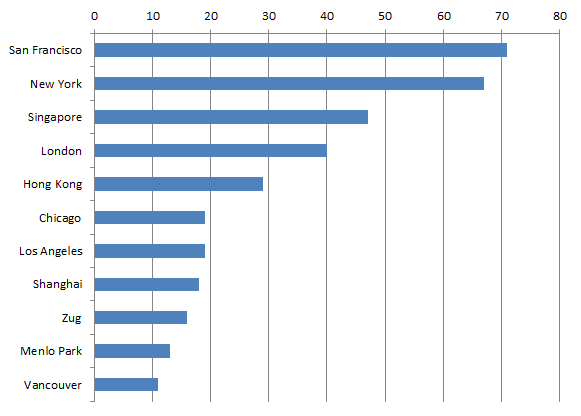 Figure 4 Distribution crypto hedge funds by city
Figure 4 Distribution crypto hedge funds by city
Performance attribution crypto hedge funds
We now analyze the performance of the crypto hedge fund industry as a whole to see if they provide uncorrelated returns to the markets (alpha), as they should, or if they just repackage passive cryptocurrency returns (beta). In this analysis we use the Eurekahedge Cryptocurrency Hedge Fund Index to represent the performance of a typical crypto hedge fund, and Bitcoin to represent the cryptocurrency market. The analyzed period goes from June 2013 to April 2019.
Figure 5 shows the performance of crypto hedge funds compared to Bitcoin over time. As it can be seen from it, the 2 series look very similar, posing into doubt the validity of crypto hedge funds as alpha products.
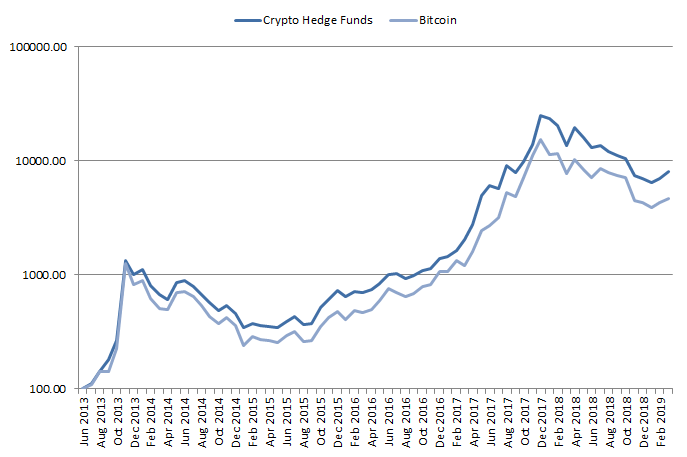 Figure 5 Performance crypto hedge funds vs Bitcoin
Figure 5 Performance crypto hedge funds vs Bitcoin
Table 1 displays the performance stats for crypto hedge funds compared to Bitcoin. As the table shows, the 2 products present very similar characteristics, with both similar returns and volatility.
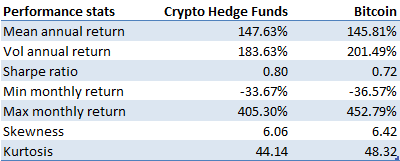 Table 1 Performance stats crypto hedge funds vs Bitcoin
Table 1 Performance stats crypto hedge funds vs Bitcoin
Figure 6 shows the relationship between Bitcoin returns and crypto hedge funds, while Table 2 quantifies it with a linear regression analysis. As it can be seen from them, crypto hedge funds are actually beta providers instead of alpha products as they should be. Their beta is actually 0.9, alpha is quite small (0.01) compared to their beta, and correlation with the crypto market 0.98. This is what should be expected by a mutual fund or crypto index fund offering some kind of exposure to the crypto market to its investors. These products are usually cheaper than hedge funds structures, since they do not require expensive resources spent for active management of the fund.
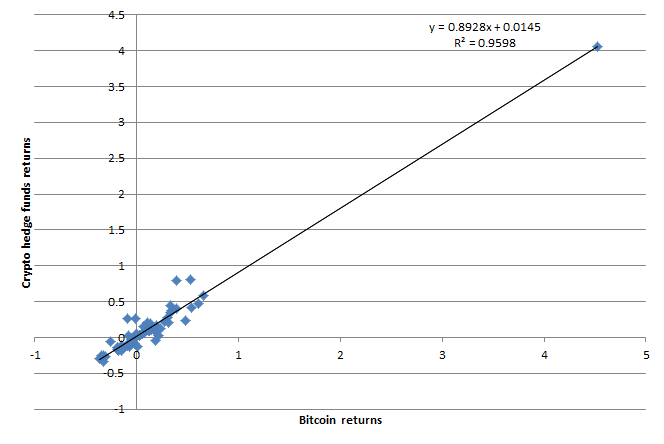 Figure 6 Relationship returns crypto hedge funds vs Bitcoin
Figure 6 Relationship returns crypto hedge funds vs Bitcoin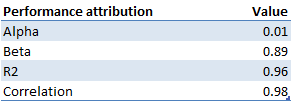 Table 2 Performance attribution crypto hedge funds
Table 2 Performance attribution crypto hedge funds
In the next section we analyze the performance a hypothetical systematic long/short crypto investment strategy, a possible crypto hedge fund strategy, and see if it delivers alpha as should be expected, contrary to the previous analyses.
Performance attribution systematic long/short crypto investment strategy
Figure 7 shows the backtested performance net of transaction costs of a hypothetical systematic long-short crypto investment strategy applied to the top 14 cryptocurrencies by traded volume. The strategy is compared to a passive buy-and-hold investment in Bitcoin. As it can be seen from the figure, the strategy would have achieved a better performance compared to Bitcoin, which is also consistent across both bull and bear markets. This is what it should be expected from a hedge fund strategy, in other words delivering uncorrelated positive returns irrespective of market conditions.
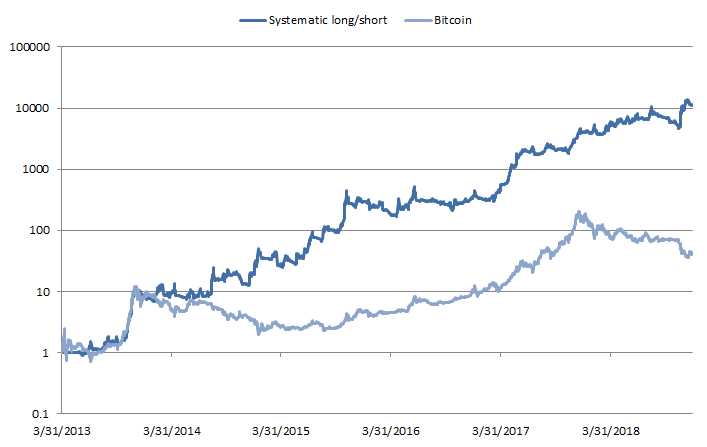 Figure 7 Hypothetical performance systematic long/short crypto investment strategy vs Bitcoin
Figure 7 Hypothetical performance systematic long/short crypto investment strategy vs Bitcoin
Table 3 shows the performance measures for the hypothetical systematic long/short crypto strategy and compares it to a passive investment in Bitcoin. As the table shows, the systematic long/short would have outperformed a passive Bitcoin investment. On the return side, it would have achieved an annual average return of 224%, almost double both Bitcoin. On the risk side, it would have had slightly more volatility than Bitcoin. As a result of the better return delivered with around the same amount of risk, the strategy would have achieved a much better Sharpe ratio of 1.96, compared to 1.18 for Bitcoin.
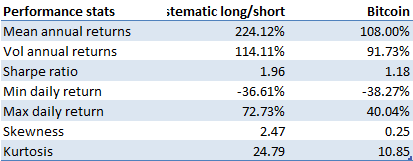 Table 3 Hypothetical performance stats systematic long/short crypto investment strategy vs Bitcoin
Table 3 Hypothetical performance stats systematic long/short crypto investment strategy vs Bitcoin
Table 4 shows the performance attribution stats for the hypothetical systematic long/short crypto strategy compared to Bitcoin. As it can be seen from the results, the strategy would have delivered real positive alpha. In fact, both beta and correlation with respect to Bitcoin returns are almost 0, as it should be expected for an alpha investment product like a hedge fund.
 Table 4 Performance attribution hypothetical systematic long/short crypto investment strategy vs Bitcoin
Table 4 Performance attribution hypothetical systematic long/short crypto investment strategy vs Bitcoin
In conclusion, based on the previous results, a hypothetical systematic long/short crypto investment strategy would have delivered alpha instead of beta and is therefore a good candidate as a proper crypto hedge fund strategy.
Conclusion
Based on the previous analyses, we can derive the following key takeaways:
- Many crypto hedge funds launched in the past 2 years: thanks to the rise in cryptocurrency price, many cryptocurrency funds launched in 2017 and 2018. They also managed to increase their AUM in 2018 despite a bear crypto market.
- Crypto hedge funds deliver beta instead of alpha: cryptocurrency hedge funds display almost the same performance to the price of Bitcoin, having beta near 1, alpha near 0, and correlation of almost 1. This shows that crypto hedge funds are actually delivering beta instead of alpha, which is what instead their investors are paying for.
- Systematic long/short crypto investment strategy represents a possible crypto hedge fund strategy by delivering alpha: an investor considering an allocation to a crypto hedge fund should only pay for alpha instead of beta. This is for example provided by a systematic long/short crypto investment strategy, which would have hypothetically delivered uncorrelated returns to the crypto markets (alpha) in the analyzed period instead of beta.
Originally published at Bluesky Capital.
Disclaimer
This article is intended for academic and educational purposes and is not an investment recommendation. The information that we provide or that is derived from our website should not be a substitute for advice from an investment professional. The hypothetical models discussed in this paper do not reflect the investment performance of any actual product or strategy in existence during the periods tested and there is no guarantee that if such product or strategy existed it would have displayed similar performance characteristics. A decision to invest in any product or strategy should not be based on the information or conclusions contained herein. This is neither an offer to sell nor a solicitation for an offer to buy interests in securities.
Is it Really a Crypto Hedge Fund? was originally published in Hacker Noon on Medium, where people are continuing the conversation by highlighting and responding to this story.
Disclaimer
The views and opinions expressed in this article are solely those of the authors and do not reflect the views of Bitcoin Insider. Every investment and trading move involves risk - this is especially true for cryptocurrencies given their volatility. We strongly advise our readers to conduct their own research when making a decision.